Filter by

Distancenet:inferring Evolutionary Distances Using A Neural Network
Phylogenetic distance estimation between taxa in a tree is critical for tree reconstruction. There exist several classical methods that are already established in the field of phylogenetics. However, these classical methods of distance estimation are not straightforward and their computation can be tedious. As neural networks show great success in pattern recognition tasks, it is reasonable tha…
- Edition
- -
- ISBN/ISSN
- -
- Collation
- -
- Series Title
- -
- Call Number
- EP BI-003
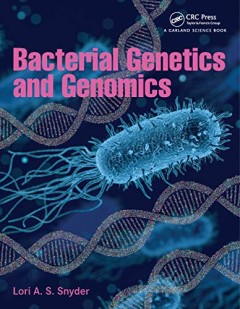
Bacterial genetics and genomics
- Edition
- -
- ISBN/ISSN
- 9780815345695
- Collation
- xx, 389 p. : ill. : ind. ; 28 cm.
- Series Title
- -
- Call Number
- 579.3135 Sny b
- Edition
- -
- ISBN/ISSN
- 9780815345695
- Collation
- xx, 389 p. : ill. : ind. ; 28 cm.
- Series Title
- -
- Call Number
- 579.3135 Sny b

The genesis machine : our quest to rewrite life in the age of synthetic biology
Synthetic biology is the promising and controversial technology platform that combines biology and artificial intelligence, opening up the potential to program biological systems much as we program computers. Synthetic biology enables us not just to read and edit DNA - the technique of CRISPR - but also write it. Rather than life being "a beautiful game of chance", synthetic biology creates the…
- Edition
- -
- ISBN/ISSN
- 9781541797918
- Collation
- 352 p. : ill. : ind. ; 24 cm.
- Series Title
- -
- Call Number
- 572.86 Web g

Population genetics
This book aims to make population genetics approachable, logical and easily understood. To achieve these goals, the book's design emphasizes well explained introductions to key principles and predictions. These are augmented with case studies as well as illustrations along with introductions to classical hypotheses and debates. Pedagogical features in the text include:* Interact boxes that guid…
- Edition
- -
- ISBN/ISSN
- 9781405132770
- Collation
- xiii, 407 p. : ill. : ind. ; 28 cm.
- Series Title
- -
- Call Number
- 576.58 Ham p

Genetika tumbuhan
- Edition
- -
- ISBN/ISSN
- 9786233590099
- Collation
- vii, 453 p. : ill. : ind. ; 23 cm.
- Series Title
- -
- Call Number
- 631.528 Cro g
- Edition
- -
- ISBN/ISSN
- 9786233590099
- Collation
- vii, 453 p. : ill. : ind. ; 23 cm.
- Series Title
- -
- Call Number
- 631.528 Cro g

Lipoprotein Lipase and Cholesteryl Ester Transfer Protein Genes-Dietary Fat I…
India has the second-highest type 2 diabetes mellitus (T2DM) due to the South Asian phenotype, poor lipid profile, and unbalanced dietary pattern. Evidence has been discovered that single nucleotide polymorphisms (SNPs) in the lipoprotein lipase (LPL) and cholesteryl ester transfer protein (CETP) genes are linked to differences in lipid levels in response to dietary intake. Hence, this revie…
- Edition
- -
- ISBN/ISSN
- -
- Collation
- -
- Series Title
- -
- Call Number
- FSN 22-020

Molecular biology of cancer : mechanisms, targets, and therapeutics
Molecular Biology of Cancer: Mechanisms, Targets, and Therapeutics offers an accessible, engaging, and optimistic account of cancer biology for undergraduate and graduate students. Using the hallmarks of cancer as a starting point, the book looks at the cellular and molecular mechanisms underpinning the transformation of cells into cancer cells. After discussing the theory, each chapter then …
- Edition
- 4th ed.
- ISBN/ISSN
- 9780198717348
- Collation
- xviii, 375 p. : ill. : ind. ; 25 cm.
- Series Title
- -
- Call Number
- 616.994071 Pec m

Systematic Approaches to a successful Literature Review
Showing you how to take a structured and organized approach to a wide range of literature review types, this book helps you to choose which approach is right for your research. Packed with constructive tools, examples, case studies and hands-on exercises, the book covers the full range of literature review techniques. New to This Edition: Full re-organization takes you step-by-step through …
- Edition
- Second Edition
- ISBN/ISSN
- 9781473912465
- Collation
- -
- Series Title
- -
- Call Number
- 028.7 BOO s
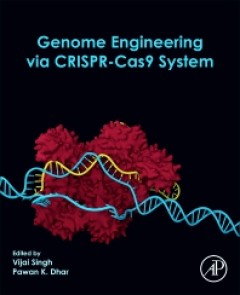
Genome engineering via crispr-cas9 system
- Edition
- -
- ISBN/ISSN
- 9780128181409
- Collation
- xxi, 361 p. : ill. : ind. ; 28 cm.
- Series Title
- -
- Call Number
- 612.028 Gen
- Edition
- -
- ISBN/ISSN
- 9780128181409
- Collation
- xxi, 361 p. : ill. : ind. ; 28 cm.
- Series Title
- -
- Call Number
- 612.028 Gen

BIOS instant notes : genetics
BIOS Instant Notes in Genetics, Fourth Edition, is the perfect text for undergraduates looking for a concise introduction to the subject, or a study guide to use before examinations. Each topic begins with a summary of essential facts−an ideal revision checklist−followed by a description of the subject that focuses on core information, with clear, simple diagrams that are easy for students …
- Edition
- 4th ed.
- ISBN/ISSN
- 9780415693141
- Collation
- vi, 380 p. : ill. : ind. ; 25 cm.
- Series Title
- -
- Call Number
- 576.5 Fle b

The molecular basis of cancer
The Molecular Basis of Cancer arms you with the latest knowledge and cutting-edge advances in the battle against cancer. This thoroughly revised, comprehensive oncology reference explores the scientific basis for our current understanding of malignant transformation and the pathogenesis and treatment of this disease. A team of leading experts thoroughly explains the molecular biologic principle…
- Edition
- 4th ed.
- ISBN/ISSN
- 9781455740666
- Collation
- xviii, 863 p. : ill. : ind. ; 29 cm.
- Series Title
- -
- Call Number
- 616.99 Men m

Principles of virology : volume I - molecular biology
Focuses on concepts and principles to present a comprehensive treatment from molecular biology to pathogenesis and control of viral infections. Illustrates why and how animal viruses are studied and demonstrates how the knowledge gained from such model viruses can be used to study viral systems that are still relatively unknown. Provides a thorough introduction to principles of viral pathogen…
- Edition
- 3rd edition
- ISBN/ISSN
- 9781555814793
- Collation
- xxii, 569 p. : ill. : ind. ; 28 cm.
- Series Title
- -
- Call Number
- 579.2 Fli p

Coming to life : how genes drive development
Coming to Life is a remarkable journey through developmental biology that reveals miraculous processes in the microscopic world of cells. Through an accounting of groundbreaking discoveries, Christiane Nüsslein-Volhard tells us many answers to historical and contemporary questions in science. For example, she brings us the newest knowledge about embryonic forms, explains the genetic mechanisms…
- Edition
- -
- ISBN/ISSN
- 9780979845604
- Collation
- xiii, 166 p. : ill. : ind. ; 23 cm.
- Series Title
- -
- Call Number
- 576.5 Nus c

Metagenomics : methods and protocols
Metagenomics has proven to be a powerful tool for exploring the ecology, metabolic profiling, and comparison of complex microbial communities as well as its important applications in the mining of metagenomes for genes encoding novel biocatalysts and drug molecules for bioindustries. In Metagenomics: Methods and Protocols, expert researches provide an overview and introduction to basic methods …
- Edition
- -
- ISBN/ISSN
- 9781607618225
- Collation
- xi, 341 p. : ill. : ind. ; 27 cm.
- Series Title
- -
- Call Number
- 572.8629 Met

Computational methods for understanding bacterial and archaeal genomes
Over 500 prokaryotic genomes have been sequenced to date, and thousands more have been planned for the next few years. While these genomic sequence data provide unprecedented opportunities for biologists to study the world of prokaryotes, they also raise extremely challenging issues such as how to decode the rich information encoded in these genomes. This comprehensive volume includes a collect…
- Edition
- -
- ISBN/ISSN
- 9781860949821
- Collation
- xix, 473 p. : ill. : ind. ; 26 cm.
- Series Title
- -
- Call Number
- 572.860285 Com

Molecular evolution : a phylogenetic approach
The study of evolution at the molecular level has given the subject of evolutionary biology a new significance. Phylogenetic 'trees' of gene sequences are a powerful tool for recovering evolutionary relationships among species, and can be used to answer a broad range of evolutionary and ecological questions. They are also beginning to permeate the medical sciences. In this book, the authors app…
- Edition
- -
- ISBN/ISSN
- 9780865428898
- Collation
- v, 346 p. : ill. : ind. ; 25 cm.
- Series Title
- -
- Call Number
- 572.838 Pag m

Techniques in molecular medicine : springer lab manual
This manual not only provides reliable, up-to-date protocols for lab use but also the theoretical background of molecular biology, allowing users to better understand the principles underlying these techniques. It covers a wide range of methods, including the purification of nucleic acids, enzymatic modification of DNA, isolation of specific DNA fragments, PCR, cloning techniques, and gene expr…
- Edition
- -
- ISBN/ISSN
- 9783642478086
- Collation
- xii, 387 p. : ill. : ind. ; 26 cm.
- Series Title
- -
- Call Number
- 572.8 Tec

Proteins : structure and function
Proteins: Structure and Function is a comprehensive introduction to the study of proteins and their importance to modern biochemistry. Each chapter addresses the structure and function of proteins with a definitive theme designed to enhance student understanding. Opening with a brief historical overview of the subject the book moves on to discuss the ‘building blocks’ of proteins and their …
- Edition
- -
- ISBN/ISSN
- 978-0471498940
- Collation
- xiv, 528 p. : ill. : ind. ; 27 cm.
- Series Title
- -
- Call Number
- 572.6 Whi p

Bioinformatics : sequence and genome analysis
As more species' genomes are sequenced, computational analysis of these data has become increasingly important. The second, entirely updated edition of this widely praised textbook provides a comprehensive and critical examination of the computational methods needed for analyzing DNA, RNA, and protein data, as well as genomes. The book has been rewritten to make it more accessible to a wider au…
- Edition
- 2nd
- ISBN/ISSN
- 9780879697129
- Collation
- xii, 692 p. : ill. : ind. ; 28 cm
- Series Title
- -
- Call Number
- 572.8 Mou b

Genetics : ethics, law and policy
This book covers the legal impact of genetics across the legal spectrum--from family law to medical malpractice law to forensics. It is perfect for an upper level seminar or course. It addresses ethical and legal issues of contemporary significance, including the regulation of genetic research; medical applications including prenatal testing, pharmacogenomics, and gene therapy; paternity testin…
- Edition
- Fourth Edition
- ISBN/ISSN
- 9781634591577
- Collation
- xlv, 847 p. : ill. : ind. ; 26 cm.
- Series Title
- -
- Call Number
- 344.7303 And g

Conservation and the genetics of populations
Loss of biodiversity is among the greatest problems facing the world today. Conservation and the Genetics of Populations gives a comprehensive overview of the essential background, concepts, and tools needed to understand how genetic information can be used to conserve species threatened with extinction, and to manage species of ecological or commercial importance. New molecular techniques, sta…
- Edition
- 2nd
- ISBN/ISSN
- 9780470671450
- Collation
- xviii, 602 p. : ill. : ind. ; 25 cm.
- Series Title
- -
- Call Number
- 333.95 All c
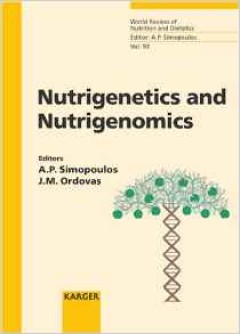
Nutrigenetics and nutrigenomics
For the first time, international scientists describe the advances in genetics and nutrition by combining methods of molecular biology with those of functional genetics, also known as systems biology. This book provides the latest data on genetic variation and dietary response, nutrients and gene expression, and the contribution molecular biology has given to systems biology. It also includes a…
- Edition
- -
- ISBN/ISSN
- 9783805577823
- Collation
- xii, 324 p. : ill. : ind. ; 24 cm.
- Series Title
- World Review of Nutrition and Dietetics Vol.93
- Call Number
- 612.3 Nut

Quickstart molecular biology : an introductory course for mathematicians, phy…
As biology becomes more quantitative and computational, increasing numbers of physical scientists, mathematicians, and engineers are moving into areas such as genomics, developmental biology, neuroscience, and systems biology. The science of molecular biology underpins all these subjects, and an understanding of its fundamental concepts and the key experimental techniques used is essential. T…
- Edition
- -
- ISBN/ISSN
- 9781621820345
- Collation
- vii, 160 p. : ill. : ind. ; 24 cm
- Series Title
- -
- Call Number
- 572.8 Ben q
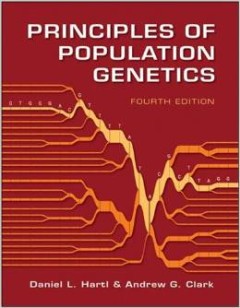
Principles of population genetics
This thoroughly updated Fourth Edition provides a balanced presentation of theory and observation. It introduces the principles of genetics and statistics that are relevant to population studies, and examines the forces affecting genetic variation from the molecular to the organismic level. Integrated throughout the book are descriptions of molecular methods used to study variation in natural p…
- Edition
- 4th ed.
- ISBN/ISSN
- 9780878933082
- Collation
- xv, 652 p. : ill. : ind. ; 24 cm.
- Series Title
- -
- Call Number
- 576.58 Har p

Molecular evolution and phylogenetics
During the last ten years, remarkable progress has occurred in the study of molecular evolution. Among the most important factors that are responsible for this progress are the development of new statistical methods and advances in computational technology. In particular, phylogenetic analysis of DNA or protein sequences has become a powerful tool for studying molecular evolution. Along with th…
- Edition
- -
- ISBN/ISSN
- 9780195135855
- Collation
- xiv, 333 p. : ill. : ind. ; 27 cm.
- Series Title
- -
- Call Number
- 572.838 Nei m

Human variation : a genetic perspective on diversity, race, and medicine
Since the appearance of modern humans in Africa around 200,000 years ago, we have migrated around the globe and accumulated genetic variations that affect various traits, including our appearance, skin color, food tolerance, and susceptibility to different diseases. Large-scale DNA sequencing is now allowing us to map the patterns of human genetic variation more accurately than ever before, tra…
- Edition
- -
- ISBN/ISSN
- 9781936113255
- Collation
- viii, 131 p. : ill. : ind. ; 26 cm.
- Series Title
- -
- Call Number
- 599.93 Hum
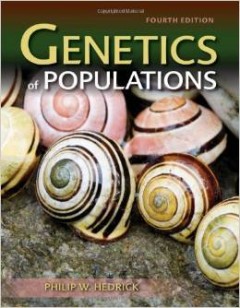
Genetics of populations
The Fourth Edition of Genetics of Populations is the most current, comprehensive, and accessible introduction to the field for advanced undergraduate and graduate students, and researchers in genetics, evolution, conservation, and related fields. In the past several years, interest in the application of population genetics principles to new molecular data has increased greatly, and Dr. Hedrick'…
- Edition
- 4th ed.
- ISBN/ISSN
- 9780763757373
- Collation
- xiv, 675 p. : ill. : ind. ; 24 cm.
- Series Title
- -
- Call Number
- 576.58 Hed g
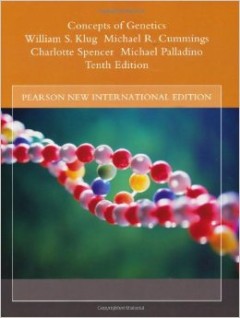
Concepts of genetics
This book covers genetics quite well its concise. It covers all the topics pretty well and also has plenty of genetic problems to make sure you know your stuff.
- Edition
- 10th
- ISBN/ISSN
- 9781292026343
- Collation
- 882 p. : ill. : ind. ; 28 cm.
- Series Title
- -
- Call Number
- 576.5 Klu c
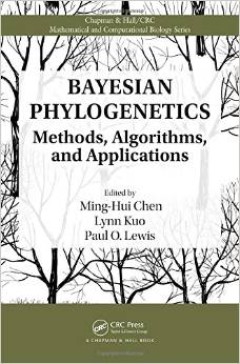
Bayesian phylogenetics : methods, algorithms, and applications
Offering a rich diversity of models, Bayesian phylogenetics allows evolutionary biologists, systematists, ecologists, and epidemiologists to obtain answers to very detailed phylogenetic questions. Suitable for graduate-level researchers in statistics and biology, Bayesian Phylogenetics: Methods, Algorithms, and Applications presents a snapshot of current trends in Bayesian phylogenetic research…
- Edition
- -
- ISBN/ISSN
- 9781466500792
- Collation
- xxx, 365 p. : ill. : ind. ; 24 cm.
- Series Title
- -
- Call Number
- 578.012 Bay

An introduction to population genetics : theory and applications
It introduces students to classical population genetics (in terms of allele and haplotype frequencies) and modern population genetics (in terms of coalescent theory). It presents numerous applications of population genetic methods to practical problems, including testing for natural selection, detecting genetic hitchhiking and inferring the history of populations
- Edition
- -
- ISBN/ISSN
- 9781605351537
- Collation
- xii, 287 p. : ill. : ind. ; 24 cm.
- Series Title
- -
- Call Number
- 576.58 Nie i

Forensic analysis of biological evidence : a Laboratory guide for serological…
A powerful tool in the identification of individuals, DNA typing has revolutionized criminal and paternity investigations. Widespread analysis is now conducted by public and private laboratories in the United States and abroad. Focusing on the basic techniques used in forensic DNA laboratories, Forensic Analysis of Biological Evidence: A Laboratory Guide for Serological and DNA Typing introduce…
- Edition
- -
- ISBN/ISSN
- 9781466514561
- Collation
- xxiii, 152 p. : ill. : ind. ; 28 cm.
- Series Title
- -
- Call Number
- 614.12 McC f

Principles of molecular medicine
The concept of molecular medicine dates back to Linus means that there are many new opportunities and challenges Pauling, who in the late 1940s and early 1950s generalized for clinical medicine. One of the effects of the completion of from the ideas that came from the study of the sickle cell the Human Genome Project is the increasing application of hemoglobin molecule. With the first cloning o…
- Edition
- 2nd
- ISBN/ISSN
- 9781588292025
- Collation
- xxv, 1268 p. : ill. : ind. ; 29 cm.
- Series Title
- -
- Call Number
- 616.042 Pri

The genetics and biology of sexual conflict
The genetic interests of males and females often diverge; traits favored by one sex can be costly to the other. Over time, this "battle of the sexes," or sexual conflict, has important evolutionary consequences (e.g., speciation). Written and edited by experts in the field, this collection from Cold Spring Harbor Perspectives in Biologyexamines the underlying biology of sexual conflict-from th…
- Edition
- -
- ISBN/ISSN
- 9781621820598
- Collation
- xi, 414 p. : ill. : ind. ; 26 cm.
- Series Title
- -
- Call Number
- 591.4'6 Gen
 Computer Science, Information & General Works
Computer Science, Information & General Works  Philosophy & Psychology
Philosophy & Psychology  Religion
Religion  Social Sciences
Social Sciences  Language
Language  Pure Science
Pure Science  Applied Sciences
Applied Sciences  Art & Recreation
Art & Recreation  Literature
Literature  History & Geography
History & Geography